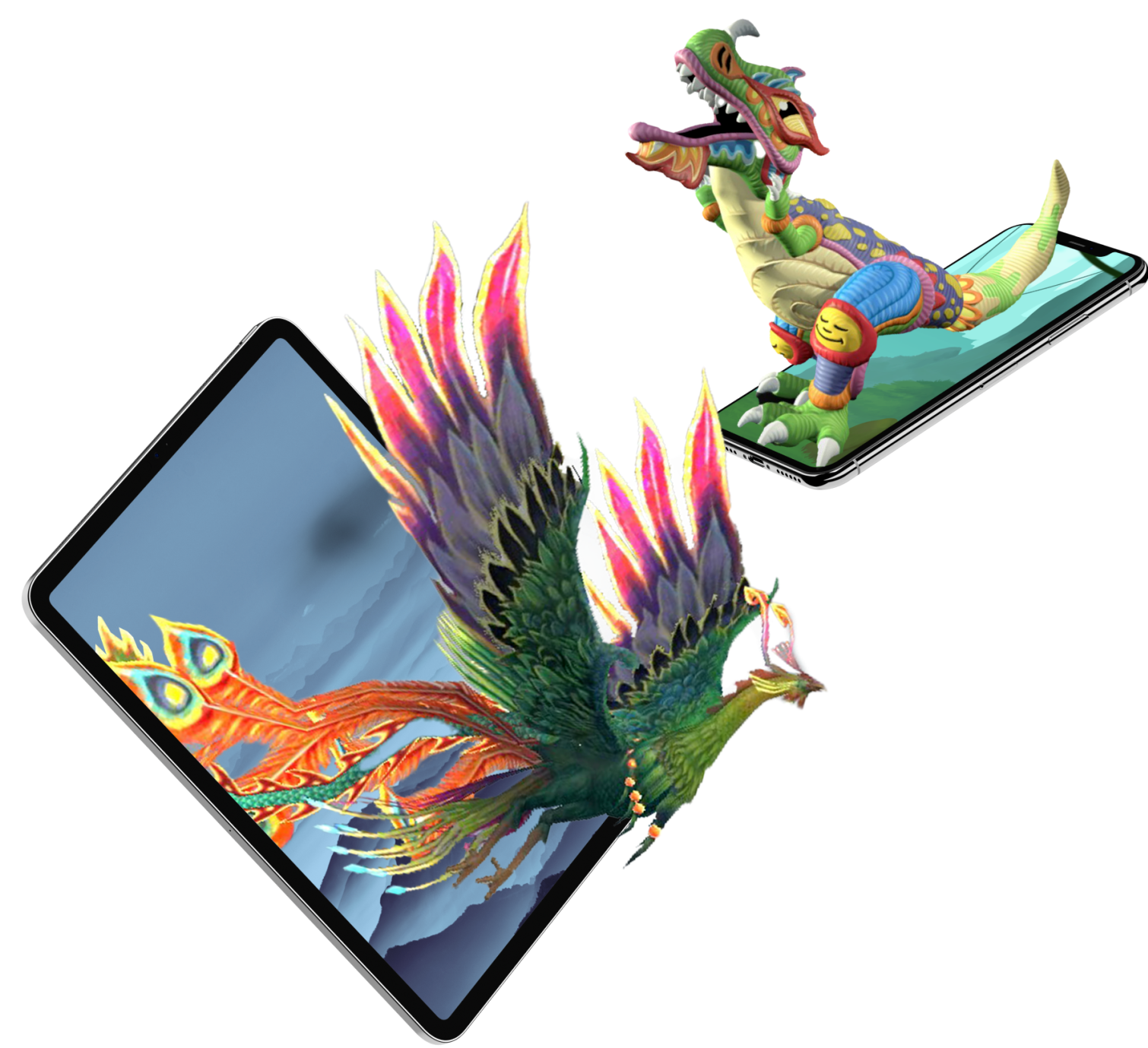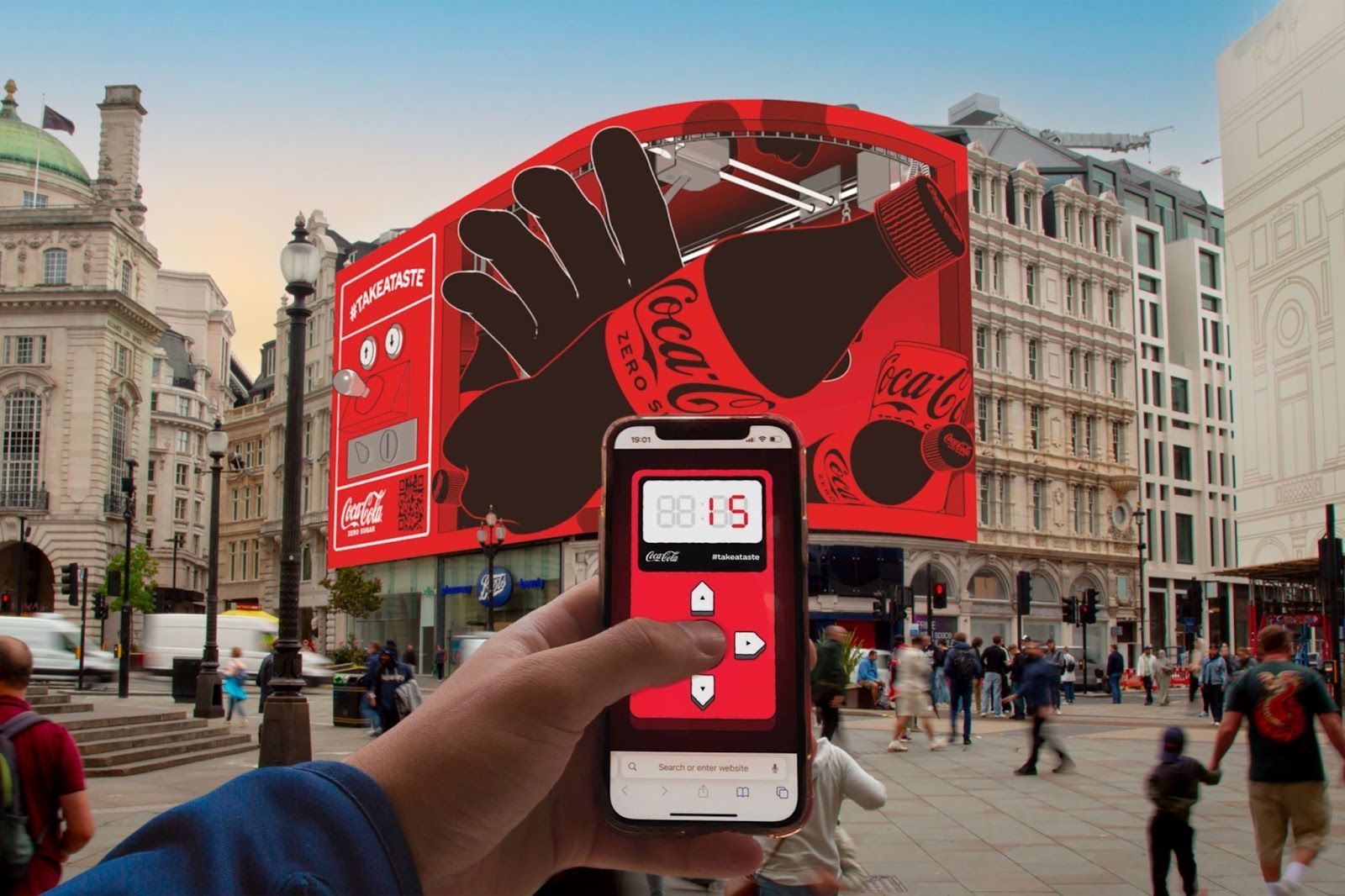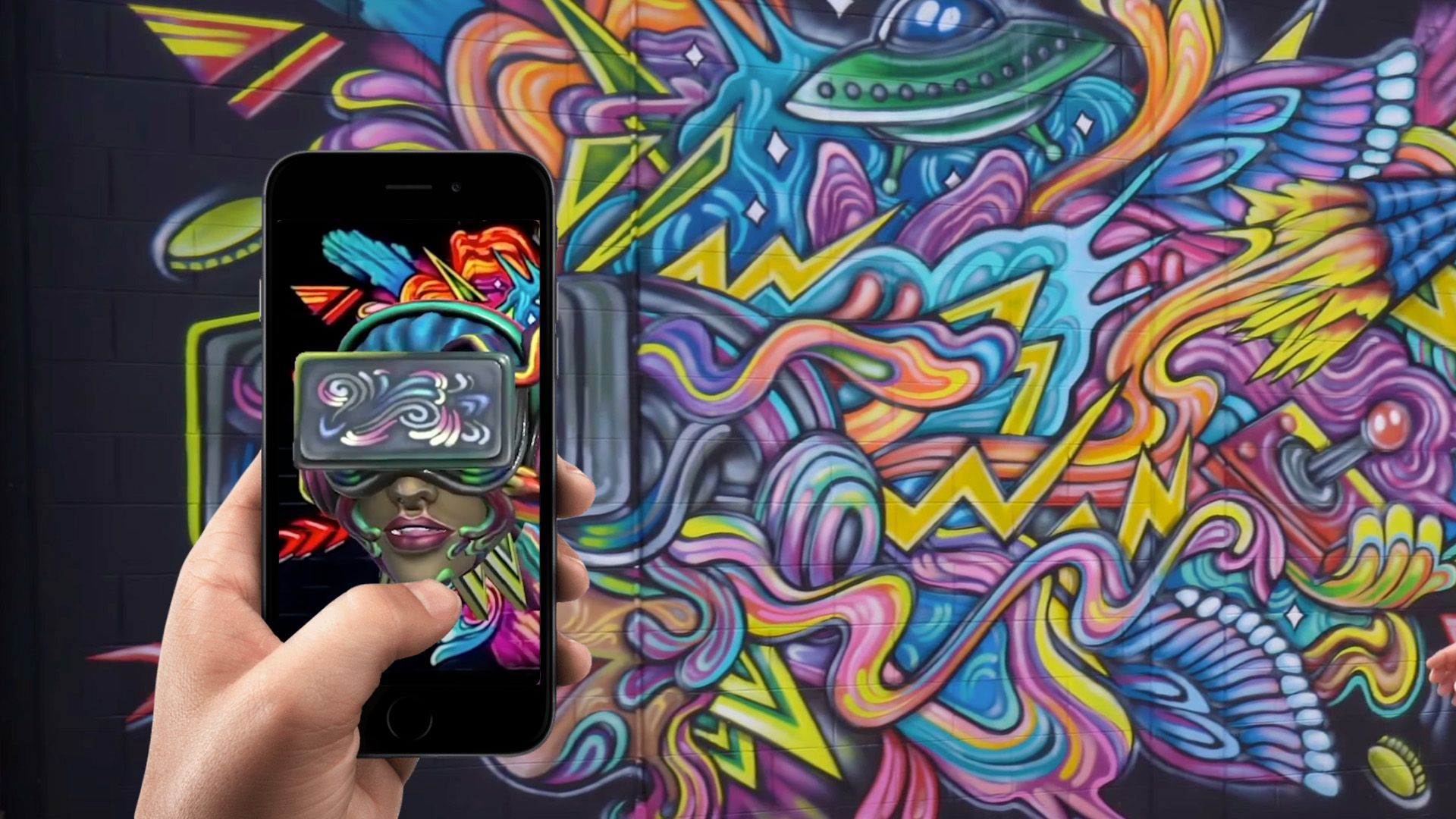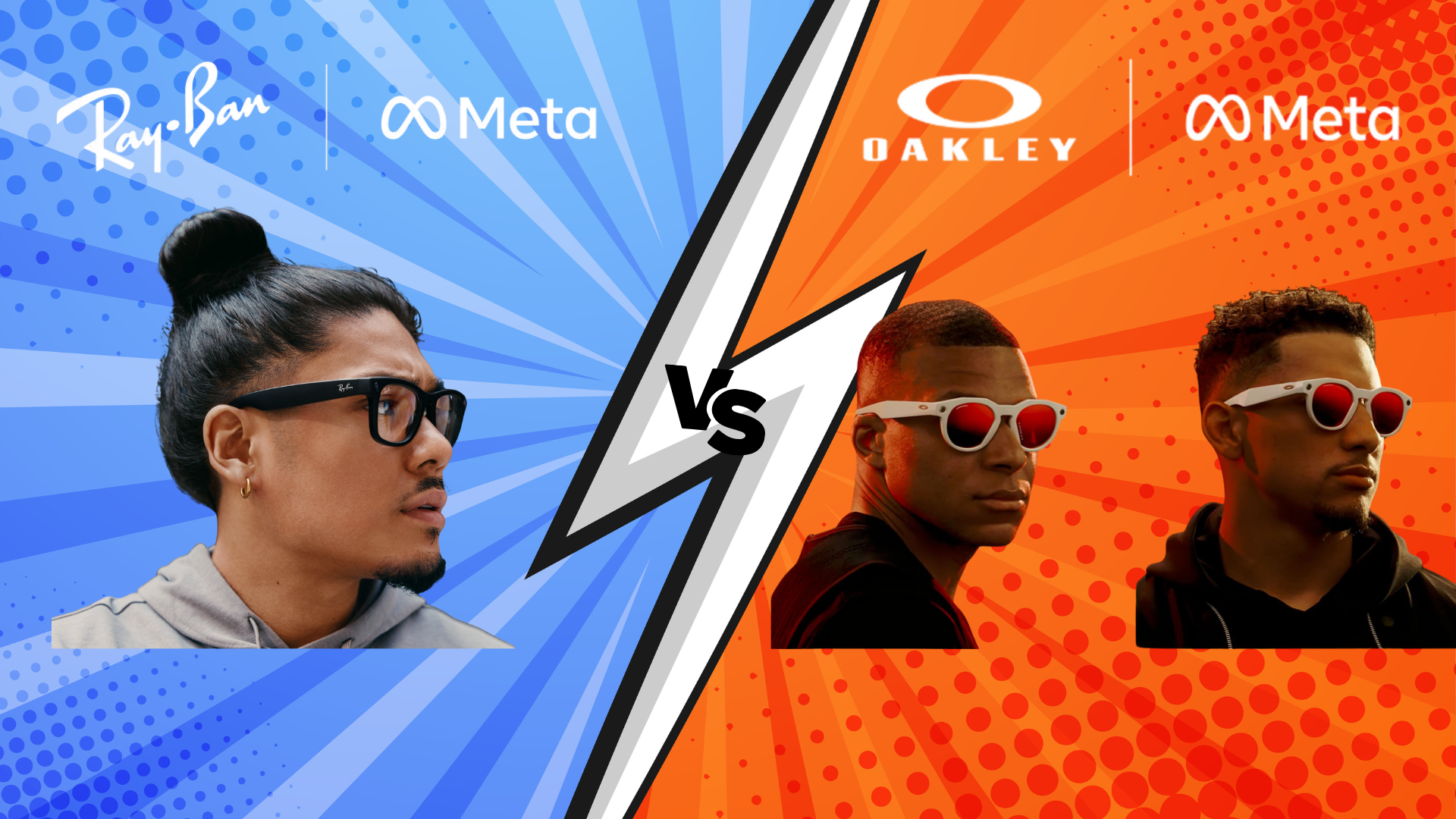2025 Conversational AI Playbook: Cut CX Costs & Boost CSAT

Executive Summary
By 2025, 80% of customer service organizations will apply generative AI to augment agents and improve CX, while the conversational AI market is set to leap from $13.2B (2024) to $49.9B (2030), CAGR 24.9%.
The transformation is already underway. 8.4 billion voice assistants are now in use globally, surpassing the human population. Meanwhile, 88% of people had at least one chatbot conversation in the past year, with 80% reporting positive experiences.
What's different this cycle?
- Emotionally intelligent bots detect tone and adapt responses; the Emotion-AI market alone will hit $13.8B by 2032
- Predictive engines move service from reactive to preventive, cutting issue volume before it queues
- Multimodal interfaces blend voice, text, image, and Augmented Reality overlays—meeting customers on any channel or device
- Proven ROI at scale: Leading implementations show 30-60% cost reductions with improved customer satisfaction
🎯 BrandXR Insight 2025: In pilot projects involving 14 Fortune 100 brands, incorporating AR "see-what-we-see" overlays in chat sessions increased first-time-fix rates by 22% and improved CSAT by eight points.
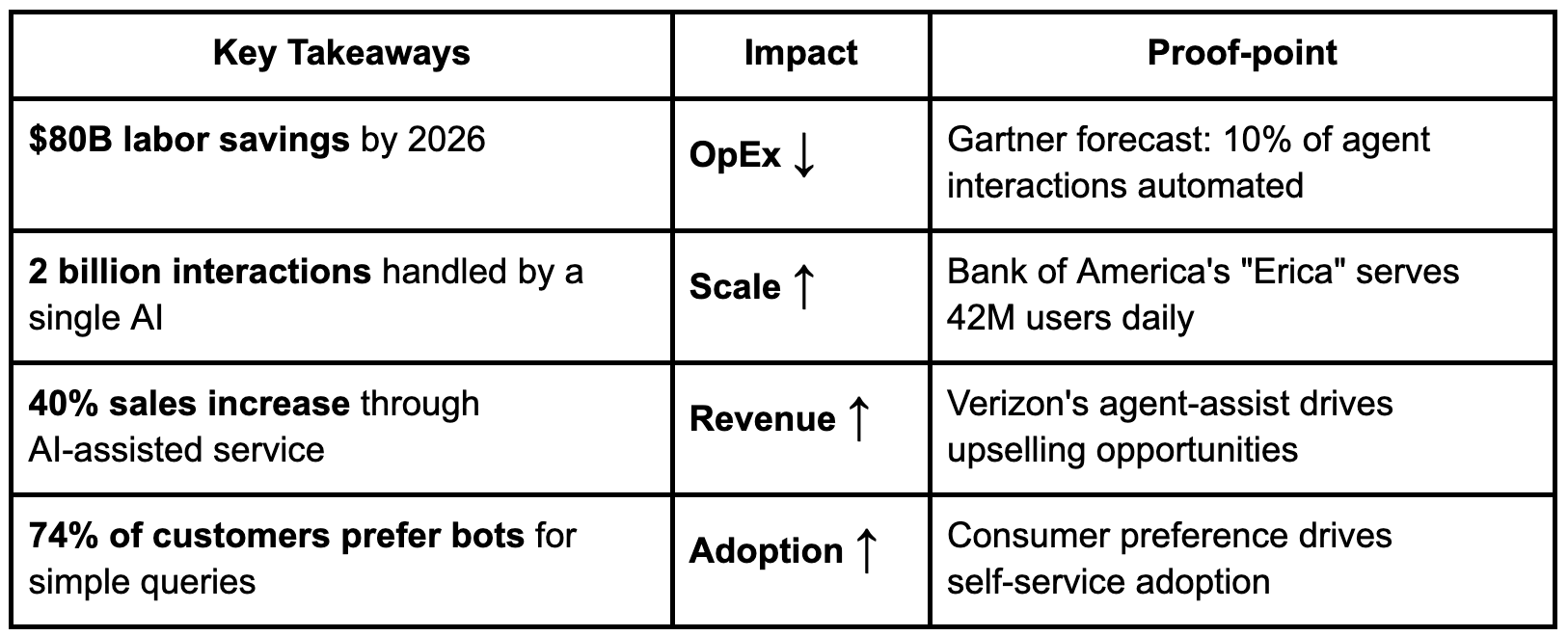
The Bottom Line: Organizations that masterfully blend emotionally intelligent bots + empowered human agents + immersive AR guidance will out-serve and out-scale competitors in the AI-powered customer service era.
Market & Technology Trends 2025
The Adoption Explosion
The numbers tell a compelling story of mainstream adoption. 60% of B2B firms and 42% of B2C firms now use chatbot software, with overall adoption expected to grow by 34% through 2025. This isn't experimental anymore—it's an operational necessity.
Consumer acceptance has reached a tipping point: 88% of people interacted with a chatbot in the past year, and notably, 80% reported positive experiences. Even more revealing, 69% of consumers say they would use chatbots for quick issue resolution to avoid waiting for an agent.
Emotionally Intelligent Bots: The Empathy Revolution
Modern conversational AI has evolved beyond scripted responses to genuine emotional intelligence. Real-time sentiment analysis triggers adaptive scripts or instant escalation, with firms rolling out EQ-aware chatbots cutting escalations by 15-20% on average.
This emotional intelligence manifests through:
- Real-time emotion detection through voice tone and text analysis
- Dynamic response adaptation based on customer emotional state
- Automatic escalation triggers for frustrated or distressed customers
- Personalized communication styles matching individual preferences
Case Example: Allstate's experimentation with GPT-based models found that AI could exhibit greater empathy in response wording than some human representatives when properly fine-tuned, suggesting that AI can be trained for both accuracy and tone—critical elements in building customer trust.
Predictive & Proactive Customer Experience
The shift from reactive to predictive service represents a paradigm change. CRM-linked models forecast intent and auto-open tickets before customers complain, with leading implementations like Telstra's AskTelstra bot deflecting 52% of complex cases.
Predictive Analytics Applications:
- Behavioral pattern analysis to predict customer needs
- Proactive outreach for potential service issues
- Automated maintenance scheduling based on usage patterns
- Personalized offer timing optimization
Multimodal Experiences: Beyond Text and Voice
Voice, text, and Augmented Reality annotations power revolutionary use cases, from remote equipment repair to "try-before-you-buy" retail guidance.
Industry Applications:
- Healthcare: Patients use voice, gestures, and text with telemedicine platforms for enhanced diagnostic accuracy
- Retail: Virtual shopping assistants with gesture controls, voice commands, and AR try-on capabilities
- Automotive: Voice navigation, gesture controls, and visual route previews for safer driving experiences
- Manufacturing: AR-guided troubleshooting with voice instructions and visual overlays
Voice-First Interfaces Everywhere
With 153 million Americans now regularly using voice assistants, voice-enabled customer service has become mainstream. The usage of smart speakers in customer service grew by 28% year-over-year, with hands-free IVAs driving appointment bookings for major health systems.
Voice Integration Examples:
- Walmart Voice Order: Customers can add items to cart via smart speakers using natural speech
- Banking Voice Services: American Express and Capital One enable account balance checks via Alexa
- Conversational IVRs: Replace traditional "Press 1" menus with natural language understanding
Enterprise-Grade System Integration
Open-API hubs link bots to ERP, CRM, and BI stacks, with implementations like Salesforce's Einstein Copilot closing 80% of cases autonomously at major enterprise clients.
Integration Capabilities:
- Seamless CRM data access and real-time updates
- Live inventory and order status retrieval
- Knowledge base integration with automatic updates
- Cross-platform conversation continuity
- Backend transaction processing (payments, bookings, refunds)
ROI Calculator & Performance KPIs
Proven ROI Across Industries
The financial impact of conversational AI is both substantial and measurable:
- Banking Sector: Juniper Research estimated that chatbots could save the banking industry $7.3 billion by 2023 through operational efficiencies
- Global Impact: Businesses worldwide could see operational cost savings approaching $8 billion annually across sectors through automated customer service interactions
- Individual Success: NIB Health Insurance saved $22 million and cut customer service costs by 60% while reducing human-agent calls by 15%
3-Year ROI Projection
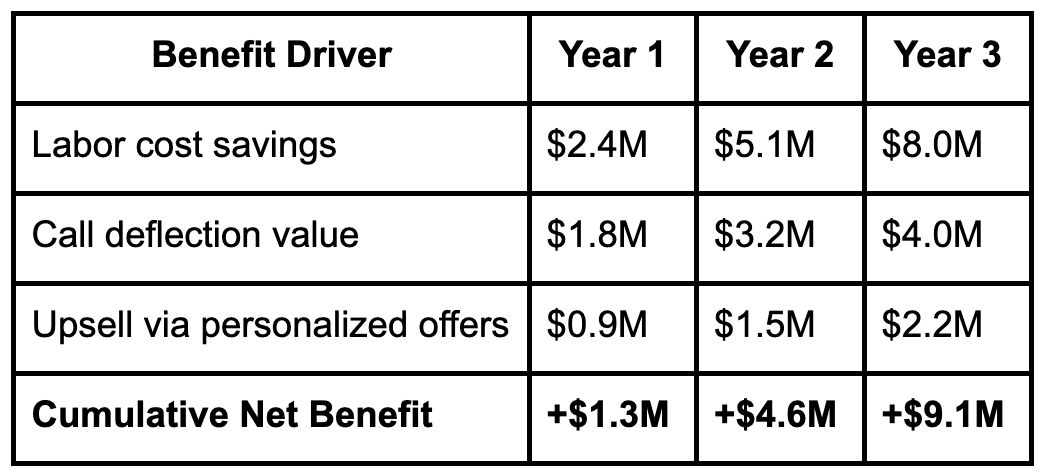
Assumes 30% deflection rate, 12% attach-rate uplift, $5.25 human vs $0.80 bot cost per interaction
Real-World Success Metrics
Bank of America's "Erica" exemplifies scalable success:
- 42 million users actively engaged
- 2+ billion total interactions since 2018 launch
- 2 million daily interactions in 2024
- Improved digital engagement and customer retention
Verizon's Agent-Assist Implementation:
- 40% increase in sales through service channels
- Reduced call handling times through AI-powered suggestions
- 28,000 service representatives enhanced with real-time AI assistance
- Higher first-call resolution rates and customer satisfaction
Core KPI Framework
Customer Experience Metrics
- CSAT/NPS Delta: Target +8 points vs. pre-AI baseline
- First Contact Resolution (FCR): Target +10 percentage points
- Average Response Time: Sub-second for common queries
- Customer Effort Score: Measure interaction simplicity
Operational Efficiency Metrics
- Containment Rate: Percentage of issues resolved without human intervention
- Cost per Interaction: Human $5.25 → Bot $0.80
- Agent Productivity: Cases resolved per hour with AI assistance
- System Uptime: 99.9% availability requirement
Business Impact Metrics
- Customer Lifetime Value (CLV) impact from improved service
- Revenue per interaction through intelligent upselling
- Churn reduction from faster issue resolution
- Market differentiation index through superior CX
Industry Case Studies & Vertical Applications
Retail & E-Commerce: The Walmart Success Story
Walmart (Fortune #1) represents the gold standard for retail conversational AI deployment, serving 230 million weekly customers with comprehensive automation.
Multi-Channel Implementation:
- Order Status Bot: Eliminates millions of contacts through instant order tracking and return processing
- Voice Shopping: "Walmart Voice Order" via smart speakers enables natural language purchasing
- Text-to-Shop: SMS-based personal shopping assistant for convenient mobile commerce
- Global Localization: Customized bots across US, Canada, Mexico, Chile, and India
Quantified Results:
- Millions of contacts deflected from call centers annually
- 38% increase in CSAT in Chile after localized bot deployment
- 24/7 instant service during peak shopping seasons without proportional staffing increases
- Higher basket sizes through voice and text shopping convenience
Key Success Factors:
- Integration with inventory management systems for real-time product availability
- Multilingual training customized for local markets and terminology
- Seamless escalation to human agents with full conversation context
- Proactive engagement based on customer browsing behavior
Banking & Financial Services: Bank of America's "Erica"
Bank of America's virtual assistant demonstrates how conversational AI can transform customer banking relationships at an unprecedented scale.
Comprehensive Service Capabilities:
- Account Management: Balance inquiries, transaction history, fund transfers
- Security Services: Card locks, fraud alerts, suspicious activity monitoring
- Financial Insights: Spending analysis, budgeting guidance, saving recommendations
- Payment Services: Bill pay, Zelle transfers, payment scheduling
Remarkable Scale Metrics:
- 42+ million active users across mobile and online platforms
- 2+ billion total interactions processed since 2018
- 2 million daily interactions with consistently high satisfaction
- 800,000+ queries per day handled during peak periods
Strategic Impact:
- Accelerated digital adoption among traditionally branch-dependent customers
- Reduced call center volume for routine inquiries by an estimated 30%
- Enhanced customer retention through improved digital experience
- 24/7 availability supporting customers across all time zones
Travel & Hospitality: Delta's AI Concierge Revolution
Delta Air Lines launched Delta Concierge in January 2025, representing the next generation of AI-powered travel assistance using generative AI for personalized, contextual service.
Advanced Service Features:
- Proactive Travel Management: Passport expiration alerts, visa requirement notifications
- Contextual Airport Assistance: Navigation help combining itinerary data with terminal maps
- Intelligent Rebooking: Automated options during flight disruptions
- Personalized Recommendations: Dining, lounge access, and upgrade suggestions
Expected Business Impact:
- Reduced call center volume during irregular operations (storms, delays)
- Higher customer satisfaction through proactive communication
- Increased ancillary revenue through intelligent upselling
- Improved operational efficiency during peak travel periods
Innovation Highlight: Delta Concierge represents a shift from reactive FAQ bots to proactive AI concierges that anticipate traveler needs and provide contextual assistance throughout the journey.
Healthcare & Insurance: CVS Health's Digital Transformation
CVS Health (Fortune #4) launched a comprehensive AI chatbot in 2025 as a "health concierge" for its 60+ million digital customers.
Health Service Automation:
- Prescription Management: Refill requests, status updates, medication reminders
- Appointment Scheduling: Integration with MinuteClinic and pharmacy services
- Insurance Navigation: Coverage verification, copay information, benefit explanations
- Wellness Coaching: Medication adherence support, health education
Healthcare-Specific Challenges Addressed:
- HIPAA Compliance: Secure handling of protected health information
- Accuracy Requirements: Integration with verified medical knowledge bases
- Empathetic Communication: Tone training for sensitive health conversations
- Emergency Escalation: Clear pathways to human medical professionals
Projected Outcomes:
- Higher prescription adherence through automated reminders and easy refill process
- Reduced pharmacy call volume by 40-50% for routine inquiries
- Improved patient satisfaction through 24/7 health support access
- Cost savings in call center operations while maintaining care quality
Telecommunications: Verizon's Agent-Assist Success
Verizon's implementation showcases how AI can transform human agent productivity while driving revenue growth.
AI-Powered Agent Enhancement:
- Real-Time Suggestions: Google's AI provides instant solution recommendations during calls
- Knowledge Retrieval: Automatic access to troubleshooting guides and product information
- Conversation Analysis: Live sentiment detection and next-best-action guidance
- Cross-Selling Intelligence: Contextual upgrade and service recommendations
Transformational Results:
- 40% increase in sales through service channels by freeing agents to focus on value-added interactions
- Reduced average handle time through faster problem diagnosis and resolution
- 28,000 service representatives enhanced with AI assistance
- Improved first-call resolution rates and customer satisfaction scores
Strategic Innovation: Rather than replacing agents, Verizon's approach demonstrates how AI can elevate human capabilities, transforming support centers into revenue-generating "experience centers."
Manufacturing & B2B: Technical Support Revolution
A global construction equipment manufacturer implemented generative AI for technical support, showcasing B2B conversational AI potential.
Technical Support Enhancement:
- Instant Manual Search: AI searches thousands of pages to find relevant solutions
- Context-Aware Assistance: Considers equipment serial numbers and service history
- Visual Troubleshooting: Integration with AR for remote equipment diagnosis
- Predictive Maintenance: Proactive alerts based on usage patterns and IoT data
Quantified Impact:
- Resolution time reduced from 125 minutes to just minutes for common issues
- Customer downtime savings of $150,000-$300,000 per day through faster support
- Agent productivity increases through AI-powered knowledge retrieval
- Higher customer satisfaction due to faster, more accurate technical assistance
Four-Phase Implementation Framework
Phase 1: Assess & Plan (Months 1-2)
Action Items:
- Map current contact drivers and volume patterns across all channels
- Calculate potential savings using real cost-per-interaction data
- Conduct a comprehensive security and compliance gap analysis
- Establish success metrics and baseline KPI measurements
Critical Success Factors:
- Executive Sponsorship: Secure a C-level champion for organizational change management
- Cross-Functional Team: Include IT, customer service, UX design, and business SMEs
- Integration Assessment: Evaluate API readiness of existing CRM, ERP, and knowledge systems
- Vendor Evaluation: Use frameworks like Gartner Magic Quadrant for platform selection
Key Deliverables:
- Current state analysis with contact volume breakdown by type and channel
- Technology readiness assessment, including integration complexity scoring
- Detailed ROI model with 3-year projections and sensitivity analysis
- Stakeholder alignment document and change management roadmap
Phase 2: Pilot Implementation (Months 3-4)
Change-Management Alert Only 45% of agents have undergone AI training, and merely 21% are satisfied with the current instruction. A single negative chatbot experience can drive away 30% of customers. Action: Launch comprehensive role-based learning paths and AI "sandbox" labs before go-live.
Best Practice Approach:
- "Thin Slice" Strategy: Choose one high-volume, low-complexity use case (e.g., order status inquiries)
- Limited Integration Scope: Connect to ≤ 3 backend systems initially to minimize complexity
- Comprehensive Training: Implement agent education program covering AI collaboration techniques
- Feedback Loops: Establish rapid iteration cycles with customer and agent input
Pilot Success Metrics:
- Containment Rate: Target 20-30% of inquiries resolved without human intervention
- Customer Satisfaction: Maintain or improve CSAT scores vs. human-only baseline
- Agent Acceptance: Monitor employee satisfaction with AI assistance tools
- Technical Performance: 99%+ uptime and sub-2-second response times
Phase 3: Scale Operations (Months 5-8)
Expansion Strategy:
- Capability Enhancement: Add predictive routing and intelligent escalation logic
- Agent Empowerment: Deploy copilot features providing real-time assistance and suggestions
- Channel Expansion: Extend to additional touchpoints (mobile app, social media, voice)
- Analytics Integration: Implement advanced reporting and conversation intelligence
Scaling Considerations:
- Performance Monitoring: Continuous tracking of key metrics with automated alerting
- Knowledge Management: Establish processes for ongoing content updates and model retraining
- Security Compliance: Implement additional safeguards for expanded data access
- Global Deployment: Plan for multi-language and regional customization requirements
Phase 4: Innovate & Optimize (Months 9+)
Advanced Capabilities:
- Immersive Integration: Add BrandXR's AR overlays for visual troubleshooting and product demonstrations
- Proactive Intelligence: Implement IoT-driven insights for preventive customer outreach
- Generative Content: Deploy AI for automatic knowledge article creation and updates
- Omnichannel Continuity: Enable seamless conversation handoffs across all customer touchpoints
Innovation Focus Areas:
- Emotional Intelligence: Advanced sentiment analysis with adaptive response generation
- Predictive Analytics: Customer journey optimization and churn prevention models
- Voice Enhancement: Natural language IVR replacement with conversational interfaces
- Personalization Engine: Dynamic customer profiling for individualized service experiences
Future Outlook: The Next Wave of Innovation
Generative AI Transformation: Beyond Scripts to Creativity
69% of organizations see generative AI humanizing digital CX, moving beyond efficiency to genuine warmth and empathy in automated interactions. Forrester analysts note that "Gen AI will save the beleaguered chatbot," dramatically improving conversation sophistication.
Emerging Capabilities:
- Dynamic Personality Adaptation based on customer preferences and interaction history
- Creative Problem-Solving for complex, unique issues requiring novel solutions
- Contextual humor and warmth appropriately timed to enhance customer relationships.
- Cultural intelligence involves recognizing and adapting to linguistic and cultural nuances.
Implementation Considerations:
- Accuracy Management: Hybrid approaches combining LLMs with verified knowledge bases
- Brand Voice Consistency: Training models to reflect company values and communication style
- Ethical Guardrails: Robust content filtering and bias detection mechanisms
Multimodal Convergence: The Complete Sensory Experience
Future customer interactions will seamlessly flow across text, voice, and visual channels with AI maintaining context and continuity.
Revolutionary Applications:
- Visual Product Support: Customers send photos of defective products for instant AI analysis and replacement processing
- AR-Enhanced Troubleshooting: Real-time visual guidance overlaid on customer equipment through smartphone cameras
- Holographic Representatives: 3D AI avatars providing face-to-face service experiences in virtual environments
- Spatial Computing Integration: Voice, gesture, and visual inputs combined for intuitive service interactions
🚀 BrandXR Innovation Preview: Our next-generation platform combines conversational AI with spatial computing, enabling customers to gesture toward problems while explaining them verbally, with AI understanding both inputs simultaneously.
Voice Intelligence Revolution
With 8.4 billion voice assistants now in global use, voice-first customer service is becoming the new normal.
Advanced Voice Capabilities:
- Conversational IVRs: Natural speech understanding replacing traditional phone menus
- Real-Time Translation: Seamless multilingual support with live interpretation
- Emotional Voice Analysis: Tone and stress detection for automatic escalation triggering
- Voice Biometrics: Instant customer identification and authentication through speech patterns
Business Impact:
- Accessibility Enhancement: Hands-free operation for customers with mobility limitations
- Efficiency Gains: Faster problem description through natural speech vs. typing
- Global Reach: Breaking down language barriers through real-time translation
- Security Improvement: Voice-based authentication more secure than passwords
Predictive Intelligence and IoT Integration
IoT + Predictive Analytics will enable bots to trigger maintenance and support actions before downtime impacts service level agreements.
Smart Ecosystem Applications:
- Wearable Health Monitoring: Proactive health alerts and care coordination through connected devices
- Smart Home Automation: Predictive maintenance and troubleshooting for connected appliances
- Industrial IoT: Equipment performance monitoring with automated support ticket creation
- Connected Vehicle Services: Real-time diagnostics and preventive maintenance scheduling
Customer Value Creation:
- Reduced Downtime: Issues prevented before they impact customer operations
- Personalized Insights: Actionable recommendations based on usage patterns
- Seamless Experiences: Invisible support that anticipates needs without explicit requests
Regulatory Evolution and Compliance Framework
By 2025-2030, clearer AI regulations will influence enterprise deployments across industries.
Anticipated Requirements:
- Transparency Mandates: Bots must clearly identify themselves as AI systems
- Human Access Rights: Guaranteed option for human interaction within reasonable timeframes
- Data Privacy Standards: Strict guidelines for conversational data storage and processing
- Bias Auditing: Regular testing and certification for fair treatment across customer segments
Strategic Preparation:
- Ethical AI Frameworks: Implement responsible AI practices before regulatory mandates
- Documentation Standards: Comprehensive logging and audit trails for compliance reporting
- Privacy by Design: Built-in data protection measures exceeding current requirements
- Industry Collaboration: Participation in standards development and best practice sharing
Customer Expectation Evolution
As AI becomes ubiquitous, customer expectations will shift dramatically:
New Standards:
- Instant Intelligence: Expectation that every company offers AI-augmented service for speed and accuracy
- Personalization at Scale: Customized experiences that remember context across interactions and time
- Proactive Assistance: Anticipatory service that addresses needs before customers express them
- Seamless Handoffs: Fluid transitions between AI and human agents without information loss
Demographic Considerations:
- Gen Z and Millennials: High comfort with AI-first interactions and voice interfaces
- Gen X and Boomers: Preference for human options with AI assistance rather than replacement
- Global Variations: Cultural differences in AI acceptance requiring localized approaches
Measurement Framework & Success Metrics
Comprehensive Analytics Framework
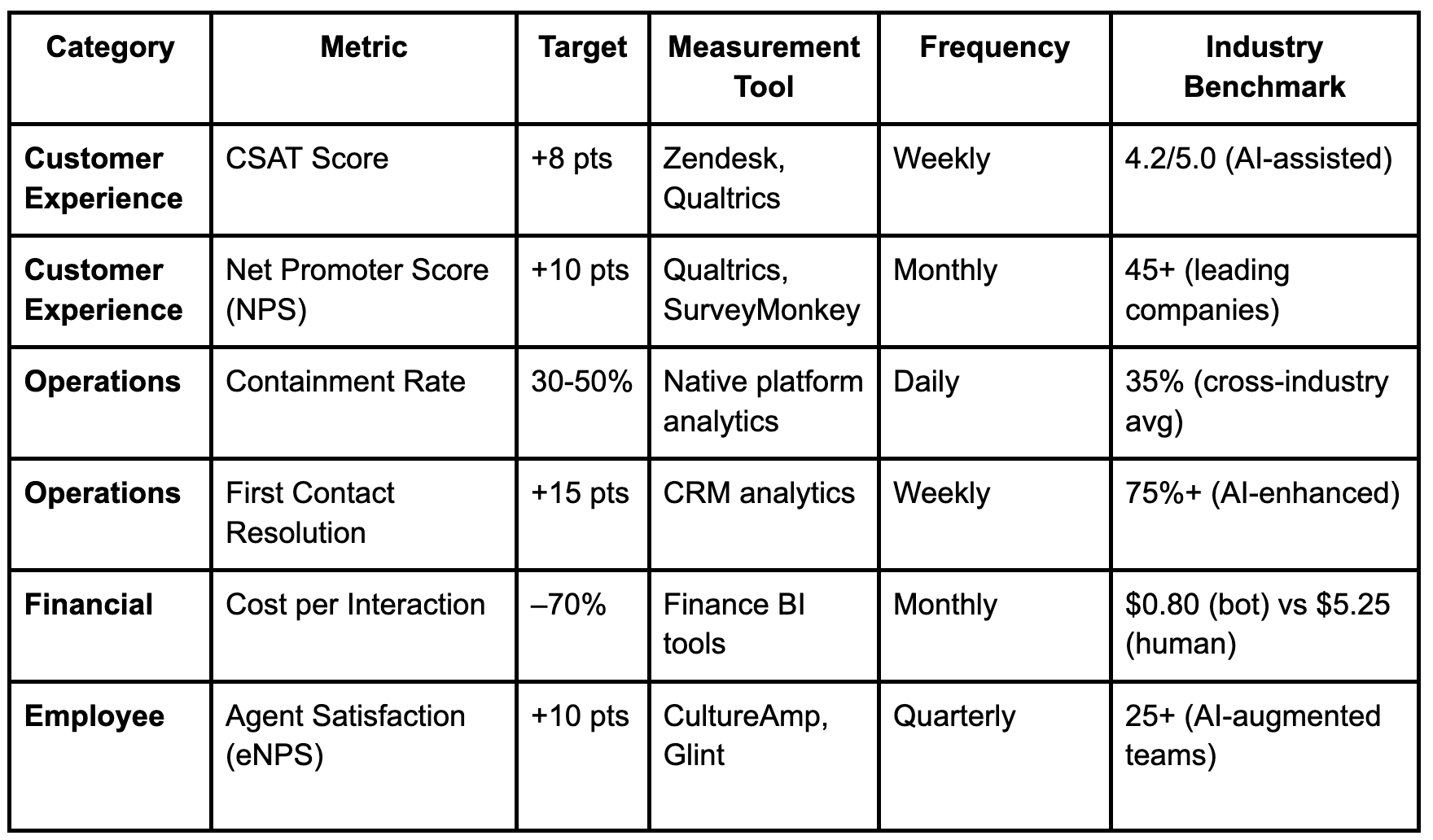
Advanced Conversation Intelligence
Real-Time Performance Indicators:
- Intent Recognition Accuracy: Target >95% for common queries
- Emotional State Detection: Sentiment analysis precision and escalation triggers
- Context Retention Rate: Multi-turn conversation continuity measurement
- Personalization Effectiveness: Tailored response impact on customer satisfaction
Predictive Analytics Metrics:
- Proactive Issue Prevention Rate: Problems resolved before customer contact
- Churn Prediction Accuracy: Early Warning System Effectiveness
- Customer Journey Optimization: Friction point identification and resolution
- Revenue Impact Tracking: Upselling and cross-selling success through AI
Business Impact Measurement
Customer Lifetime Value Enhancement:
- Retention Rate Improvement: Impact of superior AI-powered service on customer loyalty
- Purchase Frequency Increase: Service quality correlation with buying behavior
- Referral Generation: NPS improvements translating to word-of-mouth marketing
- Brand Differentiation Value: Market positioning advantages from superior CX
Operational Excellence Indicators:
- Scalability Efficiency: Volume handling capacity without proportional cost increases
- Global Deployment Success: Multi-region performance consistency
- Innovation Velocity: Speed of new capability deployment and adoption
- Risk Mitigation: Security incidents, compliance adherence, and error rates
Conclusion & Strategic Recommendations
Conversational AI has evolved from a nice-to-have to a board-level strategic imperative. The evidence is overwhelming: organizations like Walmart deflect millions of contacts, Bank of America serves 42 million users through AI, and Verizon achieves a 40% sales increase through intelligent automation.
The Competitive Reality
The window for first-mover advantage is narrowing rapidly. With 80% of organizations planning conversational AI implementation by 2025, the question isn't whether to adopt—it's how quickly and effectively you can execute.
Critical Success Factors:
- Start with Strategy, Not Technology: Define clear business outcomes before selecting platforms
- Invest in Change Management: Agent training and cultural adaptation are as important as technology
- Design for Human-AI Collaboration: Augment, don't replace, human capabilities
- Build for Scale: Choose platforms that can grow with your ambitions
- Measure What Matters: Focus on customer outcomes, not just operational metrics
The Immersive Advantage
Traditional chatbots solve communication problems. BrandXR's approach solves comprehension problems. When a customer can show an AI what they're experiencing through AR while describing their issue, resolution rates soar.
The BrandXR Difference:
- Visual Context: Customers share their actual environment, not just descriptions
- Spatial Understanding: AI comprehends physical relationships and spatial problems
- Guided Solutions: Step-by-step AR instructions ensure proper implementation
- Reduced Frustration: "Show, don't tell" eliminates communication barriers
Future-Proofing Your Investment
The organizations that will dominate the next decade are those that view conversational AI not as a cost-cutting tool, but as a customer relationship amplifier. They're implementing systems that:
- Learn continuously from every interaction to improve service quality
- Predict needs before customers express them
- Personalize experiences at massive scale while maintaining human warmth
- Integrate seamlessly across all customer touchpoints and devices
TALK TO A PRO
We're here to bring your brand to life!
Stay Connected with BrandXR
Create Augmented Reality for Free!
Create, Publish, and Measure 3D Augmented Reality Experiences Without Having to Code.
